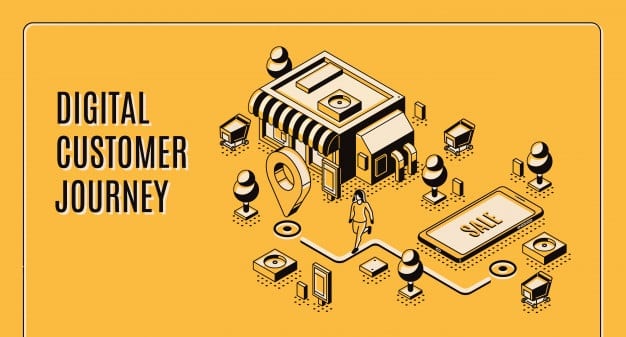Everybody has a story. How you tell yours could make the difference between converting leads and driving traffic in the other direction. One of the most effective ways of making a true emotional connection – the kind that earns trust – is to tie your story to the buyer’s journey.
What is the Buyer’s Journey?
In marketing terms, it is the path along which your audience travels from brand awareness to loyal customer. Smart marketers know how to engage buyers at each point along that journey in ways that will lead them to the next point.

It’s a delicate process that’s fraught with peril if you push at the wrong time. Consumers are sometimes a skittish breed, and it takes a lot to earn their loyalty with so much competition vying for their attention.
What does this have to do with telling your story?
The point of telling your brand story is to connect your audience on a personal level and inspire them to act. One need only look at Hollywood movies that reach a particular audience and moves them, whether to laughter, anger, or action, to get an idea of the buyer journey.
In a way, it’s like the progress of any important relationship. If you want your audience to walk with you along this path, you have to tie your story to theirs at each stage of the buying process. You should keep your tone and story consistent throughout while considering the mindset and purpose of engagement.
The 3 Stages of the Buyers Journey
There are three main stages of a buyer’s journey, first contact or awareness, consideration, and decision-time. Like as the examples that follow:
1. Brand Awareness: The Story Begins
Clearly Define Your Brand
A good place to start in raising brand awareness is with defining your brand. It needs to be clear to you, of course, but even more importantly, to the market. Defining your brand should have you asking questions such as what is your company’s goal or mission statement, what do people think about your company (if you already exist in the marketplace), what unique qualities are specific to your company.
At this point, customer research should also be done because you need to understand who your target market is, what they want, what sort of price point they are comfortable with, what their shopping habits are, and so forth.
At this stage, few people are amenable to a sales pitch. Unless they’re shopping for something they need immediately, they’re likely just investigating your brand and considering whether you can help them fulfill a specific need.
The story
The story you should be telling at this point in the buyer’s journey is designed to raise awareness. It’s the early stage of dating, so don’t come on too strong. The best type of content marketing during this phase is that which increases awareness and reach. Think about creating blog posts that supplement information or add value, such as content that addresses specific issues related to your product or service, listicles, interviews with industry insiders, and how-to videos that demonstrate your product’s use or desirability.
Once you’ve created this type of content, share it far and wide on all of your social media platforms, and encourage others within your sphere to do the same.
2. Consideration: The Heart of the Story
Now that you have their interest, they’ll have to decide whether to take the relationship to the next level or play the field some more. You’ve got their interest, you just have to keep it. At this stage, your content and outreach efforts should address their needs and how you can fulfill them.
You can get a little more personal now, possibly reaching out through email marketing or inviting them to participate in a survey. Your word choice and approach are important at this stage of the game. They’re aware of your existence, but not yet sure if you’re the one.
This is the point where you should create and share targeted content that’s geared toward solutions or ways that your company will make their life better in some way. You should base this strategy on information obtained during the early part of their journey, such as:
- How they learned about your company
- What content they’ve already been exposed to and their reaction or feelings about that content
- Their experience on your website and impressions
- Whether they’ve had any contact with someone on your team
- What are their pain points and what kind of solutions are they looking for?
Your story should be tailored in a way that takes all of the above into consideration and answers the last question. Keep in mind that there are multiple touchpoints along this route, and more than one contact or approach may be necessary to convert the lead. Above all, keep any interactions pressure-free and authentic.
3. Decision Time: Happily Ever After?
If they’ve reached the point where they are primed and reacted favorably to your previous interactions, they’re ready to make a final decision. Don’t get over confident or pushy at this stage point. Many a lead has been lost by overshooting.
Transparency is essential here. Content that will help at this stage includes:
- Testimonials from actual clients or customers
- Tutorials demonstrating how to use the product
- Video content showing how your product improves the lives of other customers
- Active online communities
- Customer hub
This will help the customer see themselves as part of your brand or the lifestyle you’re selling and activate the FOMO (Fear of missing out) instinct.
Final Thoughts
Crafting your branding strategy is one of the most important things you’ll do as you build an audience. In an era where everything seems to be automated and impersonal, bonding with customers over shared interests, goals, and beliefs provides an emotional connection that customers crave.








































One Response
This is so helpful. Thank you so much for putting this course out, it helps a lot!